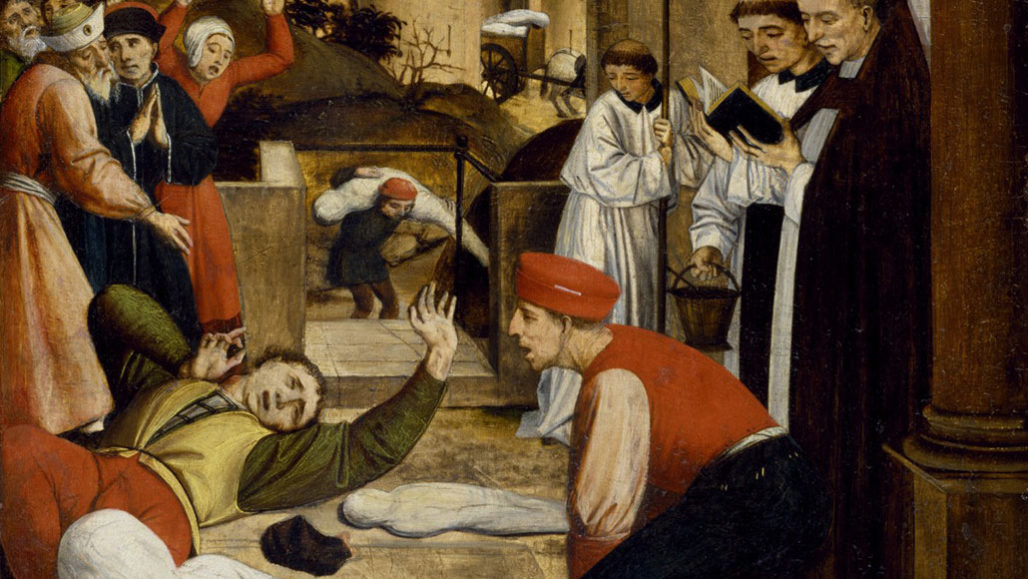A 6th century Eurasian plague, depicted inwards this epitome every bit all of a abrupt hitting the Italian human being on the left, was nowhere close every bit deadly as well as politically destabilizing every bit many scholars accept assumed, an analysis indicates.
JOSSE LIEFERINXE/WALTERS ART MUSEUM (CC0)
Archaeological prove suggests a 6th century epidemic didn’t radically alter European history
An ancient bubonic plague outbreak oftentimes characterized every bit a majority killer that felled Eurasian civilizations was truly pretty tame, researchers say.
Known every bit the Justinianic plague, the outbreak probable didn’t displace plenty deaths to trigger major events such every bit the eastern Roman Empire’s decline, Islam’s rising as well as the emergence of modern Europe, state environmental historian Lee Mordechai as well as his colleagues.
Many scholars accept argued that the Justinianic plague caused tens of millions of deaths starting inwards the 6th century as well as reduced European as well as Middle Eastern populations past times 25 to lx percent. Economies crumbled every bit a result, devastating what was left of the Roman Empire as well as ushering inwards a catamenia of cultural stagnation, from this perspective.
But several novel lines of archaeological prove related to ancient population as well as economical changes challenge that scenario, Mordechai as well as his squad written report Dec two inwards the Proceedings of the National Academy of Sciences.
Read the residue of this article...

Post a Comment
Post a Comment